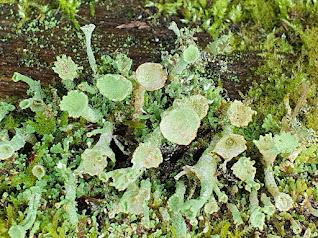Authored by

Title: Fruticose Lichens: Nature's Exquisite Sculptors
In the intricate world of lichens, where fungi and algae join forces in a remarkable symbiotic relationship, fruticose lichens emerge as some of the most captivating and visually stunning organisms. With their delicate, branching structures and diverse array of colors, these miniature marvels adorn rocky outcrops, tree branches, and other surfaces, adding a touch of enchantment to landscapes around the world. In this article, we embark on a journey into the enchanting realm of fruticose lichens, exploring their biology, ecology, diversity, and significance in ecosystems.
Anatomy and Growth Forms
Fruticose lichens, named for their shrubby or bushy growth forms, exhibit a wide variety of shapes and sizes, ranging from intricately branched tufts to elegant pendulous strands. Unlike crustose or foliose lichens, which adhere closely to surfaces, fruticose lichens extend outward and upward, creating three-dimensional structures that capture the imagination.
These lichens consist of a fungal partner (mycobiont) and one or more photosynthetic partners (photobiont), typically green algae or cyanobacteria. The fungal filaments form a loose, branching framework, providing support and structure, while the photosynthetic cells contribute energy through photosynthesis. This unique symbiotic relationship allows fruticose lichens to thrive in a variety of habitats, from arid deserts to humid rainforests.
Diversity and Adaptations
Fruticose lichens exhibit an astonishing diversity of forms, colors, and habitats, reflecting their adaptability to different environmental conditions. Some species, such as the Usnea lichens, drape elegantly from tree branches in long, pendant strands, while others, like the reindeer lichen (Cladonia spp.), form dense mats on forest floors and tundra landscapes.
These lichens have evolved a variety of adaptations to survive in harsh environments, including deserts, mountains, and polar regions. Some species can tolerate extreme temperatures, drought, and high levels of ultraviolet radiation, while others are sensitive indicators of environmental quality, responding to changes in air pollution, climate, and habitat disturbance.
Ecological Roles and Significance
Fruticose lichens play crucial roles in ecosystems as pioneers, stabilizers, and contributors to nutrient cycling. They are among the first colonizers of bare substrates, helping to initiate soil formation and create habitat for other organisms. By capturing moisture and trapping organic matter, they contribute to soil fertility and promote the establishment of plant communities.
Moreover, fruticose lichens are important indicators of air quality and environmental health, as they are sensitive to pollution and habitat disturbance. Their presence or absence can provide valuable information about the condition of ecosystems, making them valuable tools for environmental monitoring and assessment.
Conservation and Protection
Despite their ecological significance, fruticose lichens face threats from habitat loss, pollution, climate change, and overharvesting. Destruction of natural habitats, air pollution from industrial activities, and climate change-induced shifts in temperature and precipitation patterns pose significant challenges to lichen populations, as they rely on stable environmental conditions for survival.
Conservation efforts aimed at protecting fruticose lichens and their habitats include habitat preservation, restoration, and management, as well as promoting sustainable land use practices that minimize habitat disturbance and pollution. Additionally, public education and outreach programs can help raise awareness of the importance of lichens and inspire conservation action at local and global levels.
In conclusion, fruticose lichens are nature's exquisite sculptors, enriching our lives with their beauty, resilience, and ecological significance. By recognizing their importance and implementing conservation measures to protect them, we can ensure the continued survival of these fascinating organisms and the ecosystems they inhabit for generations to come.